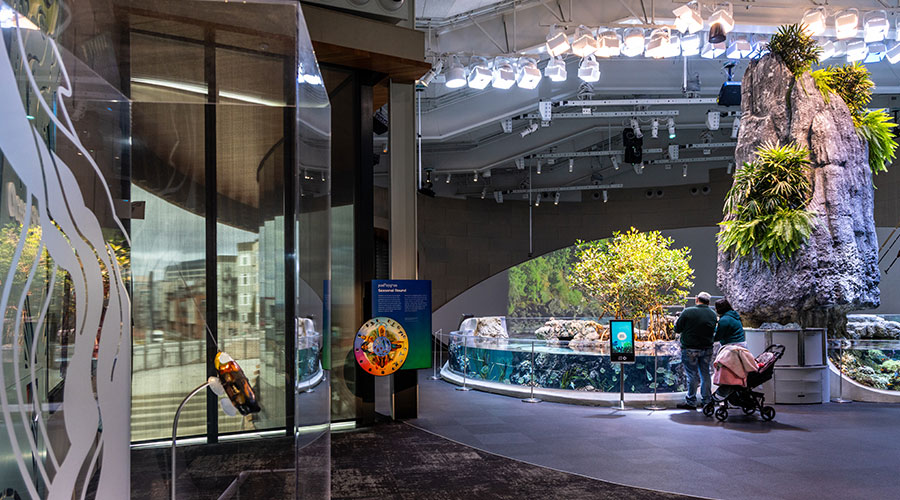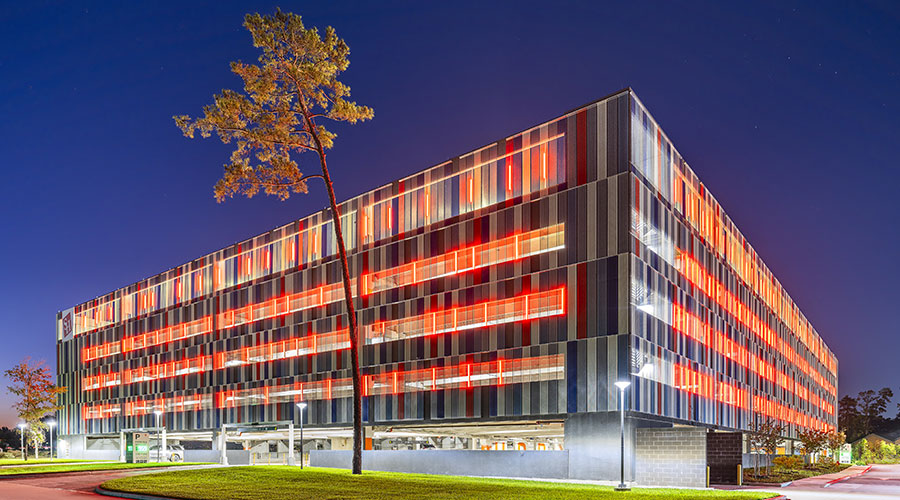Lights Out
Lighting control systems have capabilities that were only dreamed of 10 years ago � and falling costs make them increasingly affordable
Advances in lighting control technology are giving facility executives a powerful tool that can help significantly reduce lighting energy use while maintaining or improving the quality of illumination.
Advanced lighting control systems are estimated to reduce lighting energy requirements by 35 to 50 percent in most applications, with no reduction in productivity. In many cases, productivity can actually increase. And these savings are direct savings only, resulting from using less energy to provide the desired lighting levels. Lighting control systems can also reduce peak demand charges by automatically dimming or switching off certain lighting loads during periods of peak electrical demand. Additional savings can be realized through less frequent lamp maintenance and, in some cases, reduced cooling loads. The overall result is a fairly short payback, typically five years or less, and a high rate of return on the investment.
The first step in selecting a lighting control system is to determine how and when various spaces within the facility will be used and identify the lighting requirements for each.
Next, facility executives should determine if it is best to switch or dim each lighting load. Depending on how the facility is laid out, facility executives have the option of installing a system that controls the lights locally, from a central location, or both. Varying levels of automation are available depending on the application needs.
As part of the system design process, code requirements must also be addressed, particularly with lighting energy conservation becoming an increasingly important code issue.
Control Strategies
Lighting control systems vary from simple wall switches to complex microprocessor-based dimming systems that can be networked with other building automation systems. As would be expected, the more complex the system, the higher the cost and the greater the potential savings.
The simplest and least expensive control strategy for building lighting systems is manual or automatic switching. Its biggest drawback is that it can result in sudden, significant changes in lighting levels. For HID systems, switching can also result in long restrike times, typically 15 minutes, before full illumination is achieved.
To provide two levels of fairly uniform lighting, split switching can be used. For example, when using four lamp fluorescent fixtures, two lamps can be wired to one switched circuit, and the other two lamps can be wired to a second switched circuit. Turning off one switch would reduce lighting levels by 50 percent. Split switching is ideal for applications such as hallways where only partial lighting may be needed after normal operating hours.
While manual controls are the least expensive to install, their effectiveness depends on occupants’ turning lights off. As a result, they are not nearly as effective as automated controls.
Facility executives have several options when it comes to automating switched lighting. The most common and least expensive is the occupancy sensor. Ideal for use in areas that are occupied only occasionally, such as restrooms, storage rooms, conference rooms and private offices, the occupancy sensor can help to ensure that lights are operated in these areas only when they are needed.
Photocells and other light-sensing units can be used to switch part or all of a lighting system based on the available ambient light. Daylight harvesting systems make use of photocells to switch off light fixtures based on the amount of daylight available. Photocell controls work best in areas that have windows exposed to direct sunlight for much of the day.
Another option is to use time clocks or other devices connected to a central control panel to provide switching for a large number of fixtures located throughout a facility. The systems typically use relays and low-voltage wiring to connect lighting panels back to the central control panel. This approach works best in large facilities where operations tend to follow a schedule that can be duplicated by the lighting control devices. Some sort of manual override should be included to provide light in specific areas when operations extend beyond normal hours.
Dimming is an alternative to switching. While it carries a higher first cost than switching systems, the price of electronic dimming ballasts for standard and compact fluorescent lamps has decreased significantly in the past 10 years, while their performance has improved. Today’s ballasts can provide full range dimming for fluorescent lamps down to approximately 5 percent of the lamp’s rated lumen output. Unlike switching, dimming offers the advantage of smooth transitions between different lighting levels. It can be manual or automatic in operation. It is ideal for applications involving daylight harvesting as it can maintain desired lighting levels without the nuisance of having fixtures switch on and off.
Wireless Controls
Just as lighting manufacturers have worked to improve the performance of luminaires, getting the highest number of lumens possible out of a lamp, control system manufacturers have developed new hardware to reduce both installation and energy costs.
The latest generation of control systems is wireless. Two different system configurations are currently being used to communicate wirelessly between the controller and the device being controlled: one uses radio waves to communicate directly, the other uses radio waves transmitted over the existing line-voltage power wiring.
The most commonly cited benefit for wireless lighting controls is their reduced first cost. Because controllers and control devices communicate with each other without the need for installing dedicated wiring, installing a wireless control system instead of a conventional, wired system will save costs when installing the systems in both new construction and existing facilities. It is estimated that facilities can save between 30 and 40 percent of typical system installation costs simply by going wireless.
Another benefit is flexibility. Buildings today are in a constant state of flux. Modifying the building infrastructure to match changes within the space is a costly and time-consuming process. Wireless lighting control devices allow facility executives to easily and quickly move lighting devices and controllers without the need to rewire the lighting control system.
Similarly, as needs change within the building, devices can be added or removed without having to change control wiring. Since the wireless systems are highly scalable, adding new devices or expanding the operation of the control system is a simple process.
Another benefit of wireless systems is their ability to mix centralized and decentralized controls. Devices can be designed to receive commands from a central computerized control system. But devices can also be designed to accept commands from a local controller. For example, a central computer may set the hours of operations for the lighting systems in a series of offices. With a portable remote, users can override the central computer for special after-hours operations. They may also use their remote to decrease or increase the lighting level in their individual spaces based on the tasks being performed at that moment.
Wireless technology is suitable for use in practically any building regardless of size or age. While the technology is relatively expensive today, its cost is rapidly decreasing.
Avoiding the Pitfalls
While today’s lighting control systems offer capabilities that were only dreamed of 10 years ago, a system must be selected and configured for a particular application and specific occupant needs. Otherwise, users may become frustrated and bypass or override controls, negating many of the potential benefits of the system.
Plan for flexibility in how the fixtures can be located and how the control system will function. Too often, lighting systems are designed as if the occupant and the tasks performed in that space will not change during the life of the system. With the rate of change in facilities, this viewpoint is not only wrong but also can be costly and disruptive.
Don’t become blinded by a single control strategy. Different activities within a building will require different control solutions. Remember, the main function of the lighting control system is to provide the correct amount of light where it is needed and only when it is needed. When this is done correctly, the system will minimize lighting energy use as well.
FLEXIBLE APPROACH
Distributed Control Systems
Traditionally, lighting control systems have been centrally operated, with all control points connected back to a central control panel. The development of wireless and other technologies is resulting in a change to a distributed configuration. Instead of installing a central panel to control lighting, multiple control panels are installed throughout the facility. These panels may be linked by low-voltage cabling or connected wirelessly to implement both local and global commands, as well as to share information.
Distributed control systems offer the advantage of scalability and greater flexibility. As new devices are added to a centralized system, there is the risk that the central processor will eventually become overloaded and unable to meet the requirements of the system. In distributed control systems, system operation is carried out at the remote controller level rather than in a centralized processor. As more functions are added, more remote controllers are added to handle the load.
Distributed control systems are well-suited for use in medium and large facilities, and in both new construction and existing facilities.
— James Piper
|
James Piper, PhD, PE, is a writer and consultant who has more than 25 years of experience in facilities management. He is a contributing editor for Building Operating Management.
Related Topics:











